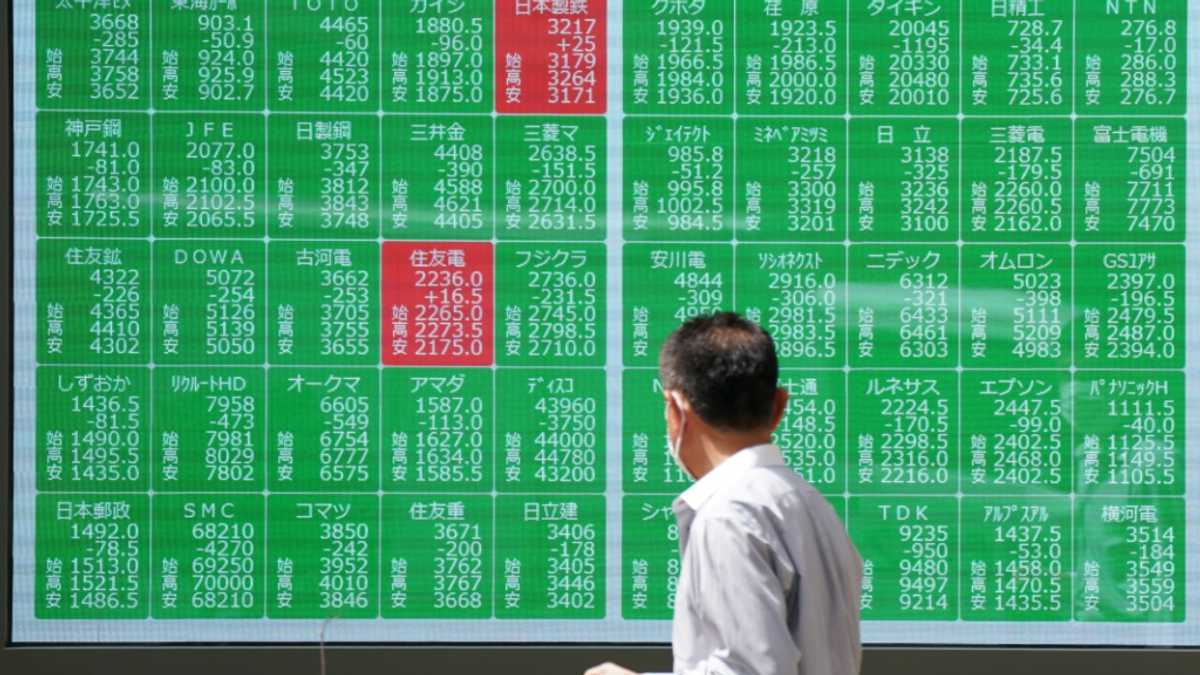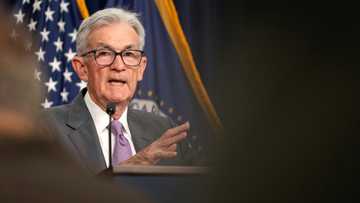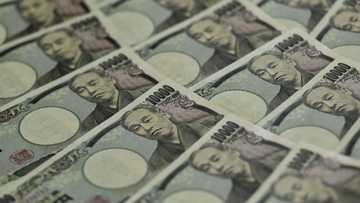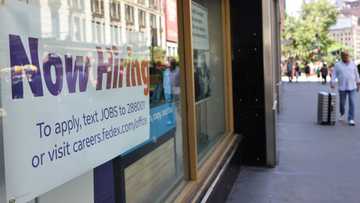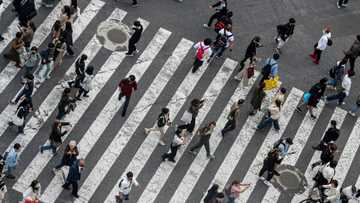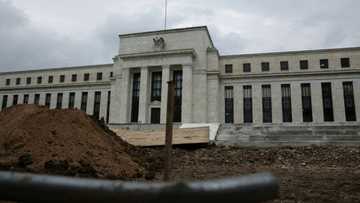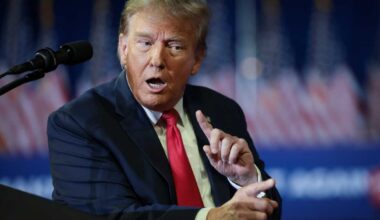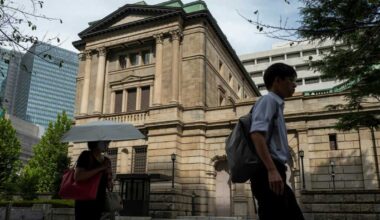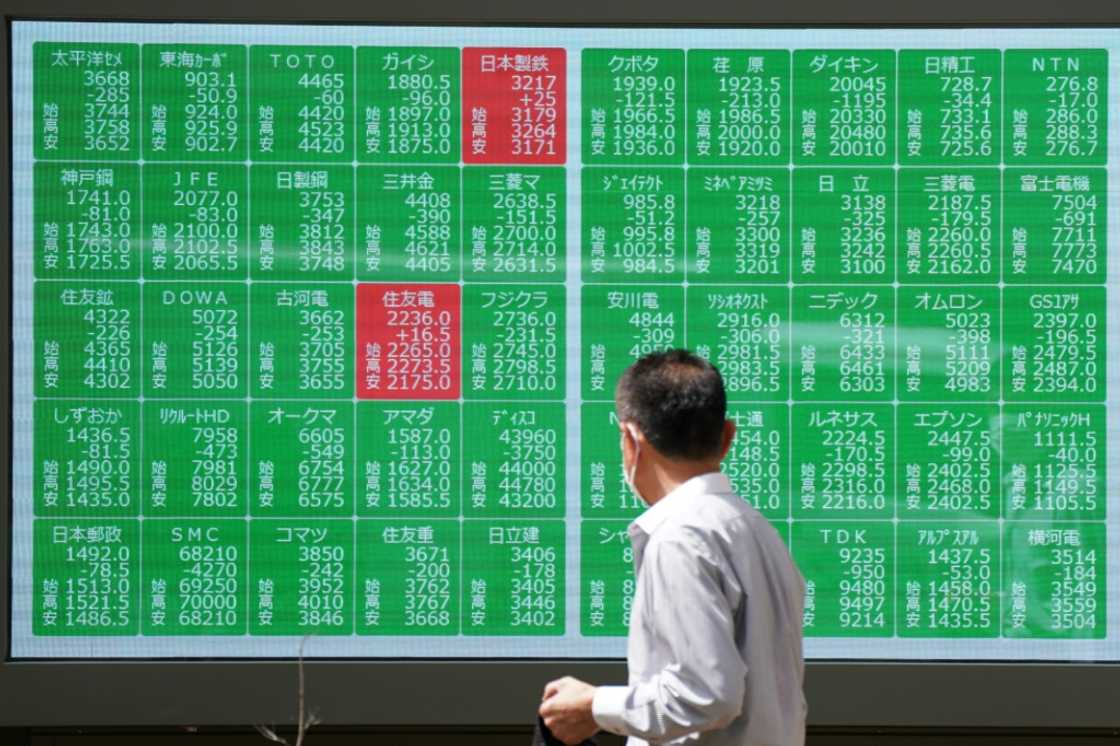
Photo: Kazuhiro NOGI / AFP
Source: AFP
Asian equities rallied Tuesday after the previous day’s global rout fuelled by US recession fears that have led to calls for the Federal Reserve to cut interest rates before its next meeting.
Tokyo, which suffered a record loss Monday, soared more than 10 percent at one point as traders rushed back to pick up beaten-down stocks caught up in a catastrophic day for markets in which trading boards were a sea of red.
Analysts warned that there would likely be more volatility to come.
The sell-off came on the back of data Friday revealing a surprisingly low number of US jobs were created last month, and another report showing continuing weakness in the manufacturing sector.
That led to warnings that the Fed had kept rates at more than two-decade highs for too long and was at risk of tipping the economy into recession.
Some analysts pointed to the “Sahm Rule,” which says an economy is in the early stages of recession if the three-month moving average of unemployment is 0.5 percentage points above its low over the previous 12 months. That was triggered by Friday’s data.
PAY ATTENTION: Share your outstanding story with our editors! Please reach us through info@corp.legit.ng!
While Wall Street’s three main indexes suffered another day of pain — with the Nasdaq down more than three percent — a forecast-beating read on the key US services sector provided a little solace for investors.
Tokyo’s Nikkei, which tanked more than 12 percent Monday and suffered a record points loss, jumped around 10.5 percent in the morning before paring some of those gains.
Toyota was up more than 10 percent, Sony piled on more than seven percent, while chip giant Tokyo Electron added 12.26 percent.
“This is a sweeping, across-the-board gain,” said analysts at Nomura, adding that investors will also pay close attention to the forex market.
Nomura expects the Nikkei to end with the biggest-ever gain, beating 2,676.55 points in October 1990.
“If movements continue as they started, the Nikkei ended yesterday with the biggest loss and will end today by renewing the biggest point gain,” it said.
Hong Kong, Shanghai, Sydney, Seoul, Taipei and Manila also rose but Singapore and Wellington suffered more selling.
Friday’s data has fanned calls for the Fed to cut rates now to support the economy, with Nobel prize-winning US economist Paul Krugman writing on social media: “I wasn’t calling for an inter-meeting cut, because that might signal panic.
“But since we may be seeing a panic anyway, that argument loses its force. Real case for an emergency cut soon.”
But Chicago Fed boss Austan Goolsbee urged caution about reading too much into one jobs report.
“As you see jobs numbers come in weaker than expected but not looking yet like recession, I do think you want to be forward-looking of where the economy is headed,” he told CNBC ahead of the US trading day Monday.
“The payroll jobs number is plus or minus 100,000 a month, so be a little careful over-concluding about things in the margin of error,” he said, adding that if the US economy deteriorated, the Fed would “fix it”.
Pantheon Macroeconomics wrote in a note to clients that the Fed “probably will place little weight on the drop in stock prices, as the main indexes still are higher than at the start of the year”.
Fed chief Jerome Powell said after the bank’s policy meeting last week that a cut could come as soon as September.
While bets had been for a 25-basis-point reduction — with at least one more before January — they have risen sharply and investors are now eyeing at least 100-basis-points-worth of cuts by the end of the year.
On currency markets, the yen’s rally ran out of puff and was sitting just below 145 per dollar, having hit a six-month high around 142 Monday.
The Japanese unit has surged over the past month — having hit a nearly four-decade low at the start of July — after the Bank of Japan hiked interest rates on the same day Powell indicated the Fed was planning to loosen policy.
But analysts at Moody’s Analytics wrote: “Asia’s equity selloff will cause sleepless nights at the Bank of Japan. For the past two years, the central bank had been playing it safe, wary of repeating the mistake of tightening policy right into a downturn.
“The last significant rate hikes by the BoJ were in 2006, just before the collapse of Lehman Brothers, and in 2000, just as the dot.com bubble burst. Both times, the BoJ was forced to reverse course.
“The BoJ can hardly be blamed for this latest market selloff, so another U-turn is not a foregone conclusion. But the selloff doesn’t make last week’s rate hike — which was already on shaky ground — look any better.
Key figures around 0230 GMT
Tokyo – Nikkei 225: UP 9.4 percent at 34,416.32 (break)
Hong Kong – Hang Seng Index: UP 0.9 percent at 16,852.60
Shanghai – Composite: UP 0.6 percent at 2,877.27
Dollar/yen: UP at 144.58 yen from 144.05 yen on Monday
Euro/dollar: DOWN at $1.0955 from $1.0959
Pound/dollar: UP at $1.2786 from $1.2773
Euro/pound: DOWN at 85.69 pence from 85.77 pence
West Texas Intermediate: UP 1.9 percent at $74.32 per barrel
Brent North Sea Crude: UP 1.5 percent at $77.42 per barrel
New York – Dow: DOWN 2.6 percent at 38,703.27 (close)
London – FTSE 100: DOWN 2.0 percent at 8,008.23 (close)
Source: AFP
